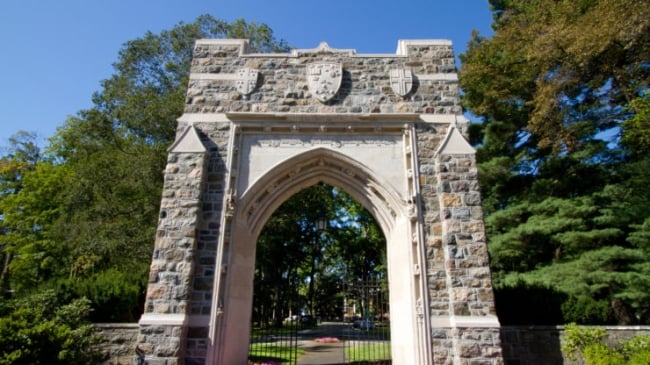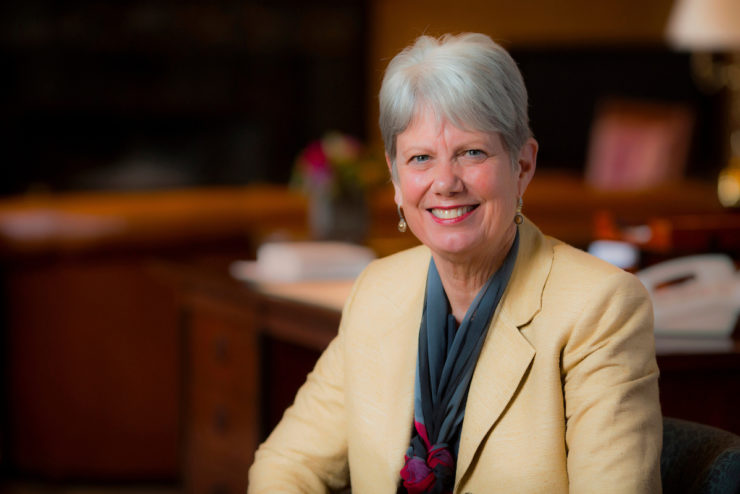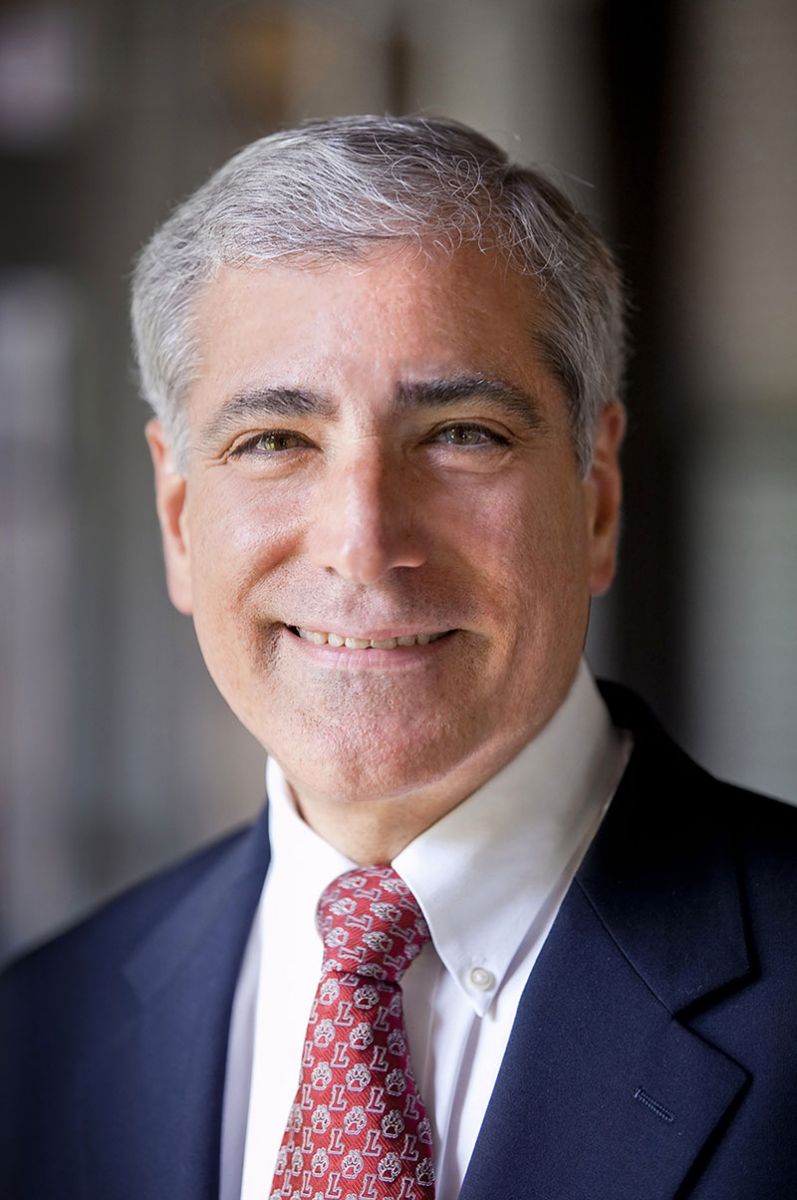You have /5 articles left.
Sign up for a free account or log in.

Drew University
MaryAnn Baenninger inherited a budget deficit when she came to Drew University in the summer of 2014. The next year, the small private university’s deficit grew.
And that was by choice.
Drew spent more as Baenninger sought to put money into the university’s campus, students and employees. The university issued its first raises in about five years. It hired a respected enrollment guru and increased its financial aid spending. It renovated the dining hall.
The spending was a change for Drew, a pricey university to the west of New York City in Madison, N.J., which had been preparing for budget cuts following several years of dropping enrollment before Baenninger arrived. But, according to Baenninger and members of her administration, the spending helped to keep talented staff and faculty members from leaving, improve student retention and increase applications from prospective students.
“We were losing kids on the food, for God’s sake,” Baenninger said. “Our salaries were going downhill. Now they’re going up.”
Recently, however, the spotlight has shifted to Drew’s deteriorating financial situation. Moody’s Investors Service drove home that point this month by downgrading Drew’s bonds for the second time in 15 months. Moody’s dropped one series of bonds from Ba3 to B2 and two others from Ba3 to B3, sinking them farther into junk territory and signifying that they are highly speculative.
Moody’s pointed to operating deficits that are expected to last longer than previously projected, along with a competitive student market constraining possibilities for short-term revenue growth. It said Drew has no more unrestricted liquidity left and would have to rely on loans and distributions from temporarily restricted endowment assets for working capital. Moody’s also assigned a negative rating outlook.
“The negative outlook reflects our expectations that the university's financial performance will remain challenged over the next few years, which will continue to erode the remaining spendable cash and investments, making a return to financial stability very difficult,” Moody’s analysts wrote.
The downgrade came after Drew administrators realized they would be running a deficit for a year longer than they had originally anticipated, according to Baenninger. The university will be carrying deficits into 2021-22.
Now, cuts are clearly necessary, Baenninger said. But she still thinks her strategy of spending early was the right one.
 “It is really hard,” the president (at left) said in an interview this week. “But what we chose to do -- and I feel very strongly that this is the only way it would work -- we chose to invest first, learn about the institution with our new team and our new CFO. Learn about the institution, and then deploy the cost savings so we weren’t inadvertently cutting things that would hurt us more.”
“It is really hard,” the president (at left) said in an interview this week. “But what we chose to do -- and I feel very strongly that this is the only way it would work -- we chose to invest first, learn about the institution with our new team and our new CFO. Learn about the institution, and then deploy the cost savings so we weren’t inadvertently cutting things that would hurt us more.”
The question Baenninger faces now is whether enough fat can be cut from Drew to free money for seemingly competing needs. The university must do more to balance its budget. But it also wants to find a way to invest in new programs. At the same time, it needs to prove wrong concerns about the competitive student market by attracting more students and more tuition dollars.
Drew is not alone in those questions -- small liberal arts colleges across the country have been forced to figure out how much they can cut, how much they will have to change and where they can grow to stay afloat in a difficult market. For Drew, Baenninger believes the answer has to involve growth -- even in the midst of coming cuts.
“I still view Drew’s structural deficit problems as revenue problems -- that is, over all, we’re not spending more than an institution of our type should be spending,” Baenninger said. “But particularly because our enrollment wasn’t stable and our retention was low -- strikingly low for an institution of our type -- we weren’t bringing in the revenue that we should bring in.”
Where to Cut, Where to Invest?
In Baenninger’s first year, working under an operating budget she inherited, Drew spent $84.6 million but only brought in $73.5 million in revenue. The next year, fiscal 2016, spending rose to $90.4 million, rising faster than revenue, which increased to $76.7 million. That means Drew’s operating deficit increased by $2.6 million, from $11.1 million to $13.7 million -- the deficit amounted to 15 percent of spending.
With Drew on pace to continue its deficits in the current year, Baenninger has been increasingly discussing cuts and how to financial balance. The way forward will likely include significant administrative cuts, skewing university spending away from its administration and toward academics.
Drew has been offering voluntary early retirements and is restructuring its academic administration in moves expected to save millions. The university will be keeping a tight capital budget -- it does not plan any borrowing -- and looking for ways to control benefit costs.
“Our cost-savings plan, which will be unfolding over the next six months, will cause us to be able to create a very, very different cash-flow situation very rapidly,” Baenninger said.
At the same time, Drew is evaluating programs it can add -- as many as dozens across its three colleges over coming years. It is in the process of adding a media and communications program. And it plans to add to a group of programs that have students spending semesters in New York City.
The university is looking into fields like public health and data science for new undergraduate concentrations. And its Theological School and College of Liberal Arts have been working with consultants on potential new programs and strategic planning.
“What we are looking to do is create these opportunities that define liberal arts with a career,” Baenninger said. “It’s not something that sounds particularly innovative or unique, but these are things that Drew didn’t do before.”
‘You Have to Have a Depth of Applicants’
 New programs mean little if Drew can’t draw students. Perhaps the most crucial part of the university’s recovery plans revolve around boosting enrollment and retention. Robert Massa (right), senior vice president for enrollment and institutional planning, is in charge of those tasks.
New programs mean little if Drew can’t draw students. Perhaps the most crucial part of the university’s recovery plans revolve around boosting enrollment and retention. Robert Massa (right), senior vice president for enrollment and institutional planning, is in charge of those tasks.
Massa is known for his work at Dickinson College in Pennsylvania, where he raised applications, enrollment and revenue at a time when the college had a new president. He’s in a situation now that looks strikingly similar. He started working at Drew as a consultant shortly after Baenninger was hired. A few months later, in February 2015, he signed on full time.
Drew had previously looked at its financial situation and cut from student aid, Massa said. But he believes those financial aid changes brought unintended negative consequences, hurting the university’s market position and leading to more students leaving because they had large gaps in their financial aid packages.
Enrollment bottomed out, Massa said. In the fall of 2014, weeks after Baenninger arrived, the first-year freshman class was as small as it had ever been, at 302 students. That was despite a freshman discount rate of 58 percent, well above the national average for private colleges, which is about 50 percent.
Yet when Massa arrived, leaders made the decision to spend more to attract students.
“The only lever I could pull, because applications had declined, was the financial aid lever,” Massa said. “We had made a decision that we needed a critical mass, and the discount, we’d have to drive that up.”
The university’s first-year tuition discount rate spiked to 67 percent in the fall of 2015. But freshman enrollment rose, too, hitting 357. Total undergraduate enrollment rose from 1,482 in the fall of 2014 to 1,514 in the fall of 2015.
Drew's freshman discount rate and enrollment ticked down slightly this year to 62 percent and 350 as of the fall. Total undergraduate enrollment came in at 1,589, up from previous years as freshman retention has climbed.
The university has essentially used financial aid to buy more students while still making itself more selective. Its acceptance rate fell from about 70 percent in 2014 and 2015 to 57 percent in 2016.
“I’m not trying to get more applications so we can reject people,” Massa said. “The point is, in order to have a deep enough pool to be able to select a class that’s both academically qualified and has some financial ability, you have to have a depth of applicants.”
Drew can be successful with a higher discount rate than many other private institutions, Massa argues. At about $47,000 before room, board and fees, its listed tuition is higher than many other private colleges. So even after discounting, Massa said, Drew’s net tuition per student is still about $1,000 higher than a typical private college.
“Our discount rate is high, and I don’t like being in the low 60s,” he said. “But our net revenue per student is higher than average.”
The university’s discount rate will fall in the future, Massa predicted. Still, he thinks it's unlikely to drop below 55 percent.
For next year, the goal is to bring in a freshman class of about 385, Massa said. Going forward, he thinks the university needs an annual applicant pool of about 4,000 to admit classes at the levels of selectivity he targets. Ideally, Drew would accept 2,000 students to get to 385 or 400 freshmen enrolling each fall. Its overall undergraduate student body would number about 1,750. Add in graduate students, and Drew would then have about 2,300 students, up from about 2,200 today.
Massa has been working to build relationships with high school counselors. He’s recruiting heavily in the New York City metropolitan area and other areas up and down the East Coast.
“I will be honest with you, there is a lot of work to be done,” he said. “It’s a deep hole to dig out of, but I’m actually confident that we can do it.”
The administration still has the backing of the chairman of the Board of Trustees, Dean T. Criares. Key indicators are moving in the right direction, and the board was looking for someone who was willing to do the work of repositioning Drew for the future when it hired Baenninger, Criares said.
That hasn’t changed with the current financial situation.
“It is my responsibility to be concerned,” Criares said. “And to constantly ask, ‘What if?’ But at the moment, we are cautiously optimistic around the trends that MaryAnn has been able to generate.”
‘The Pressures Are Worse Than They’ve Ever Been’
Still, observers who know Drew best worry about its current position. The path back will not be easy, said Thomas H. Kean, a former governor of New Jersey who went on to become Drew’s president from 1990 to 2005.
“There have been some problems, and not all of the school's making,” Kean said. “We went through a very difficult economic period. I have tremendous sympathy for anybody in the job these days of running a small liberal arts school, because the pressures are worse than they've ever been.”
Drew was in a similar situation when Kean became president, he said. He also took time to evaluate the circumstances, bring in his own team of administrators and fix the problem, he said.
Kean's recommendation for Drew today is a heavy emphasis on fund-raising. The university has a strong alumni base, he said.
The market value of Drew’s endowment has taken a major hit of late, falling by 19.1 percent between 2015 and 2016 to $172.2 million, according to annual figures gathered by the National Association of College and University Business Officers and Commonfund. While the endowment value is still much higher than those of many universities, particularly on a per-student basis, the drop is precipitous.
Kean is quick to say that he believes Drew's faculty members are dedicated and that the university still offers a top liberal arts education. He also continues to believe in the value of that education, he said.
“I fear for the future of liberal arts colleges in general,” Kean said. “Small ones that do not have major endowments to back them up, that's a large number of places. And yet, like Drew, there are a lot of very good places, and their loss would be dramatic for the country, and the country would be a much poorer place without them.”
Kean said he opted to be open with faculty members about Drew’s problems after he started there. It's unclear how much Baenninger’s actions will mirror his approach going forward. Drew’s current president has sent regular communications about the university’s strategic planning, most recently addressing the Moody's downgrade in separate messages to faculty, staff and students and to alumni.
On campus, Drew's Faculty Senate has not been meeting regularly in recent years, said Sarah Abramowitz, a professor of mathematics and the chair of Drew's department of mathematics. She is a representative on an annual planning and budget committee, which Baenninger has used to help make important decisions.
There are pockets of concern about the financial situation among Drew's faculty, Abramowitz said. Still, she said the mood on campus is not panicked. Faculty members have known about underlying financial problems for some time.
“Before MaryAnn came, we tried to make budget cuts,” Abramowitz said. “That program was not successful.”
The previous program, which was called off when Baenninger arrived on campus, would have cut academic programs at Drew, even though the university already considered itself to have relatively few programs, Abramowitz said. Still, faculty knew some sort of cuts would be coming eventually, she said. Now, she believes Baenninger will be able to find savings without cuts that could damage academics.
“Nobody has any details, including me,” Abramowitz said. “But I do trust that she's going to do them in a very sensible way.”
Finding the right mix of cuts is the challenge of the moment. The bottom line is that Drew has not dedicated itself in the past to making necessary sacrifices, according to Baenninger. She thinks there are numerous areas where the university can stem flows of unnecessary spending.
“With most institutions, you see long-term sustained cuts that are eating away at the muscle,” Baenninger said. “Drew needs to eat away at its fat.”




